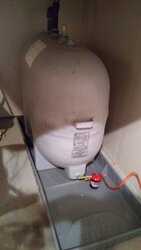My indoor basement oil tank is 34 years old. The oil tank replacement companies seem to agree it needs replacement after 30 years because it can rust from the inside out due to water in the tank.
Any knowledgeable opinions on this?
Any knowledgeable opinions on this?
Last edited:


